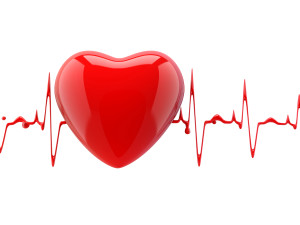
Have you ever taken a group exercise class? If so, you may have noticed that students are oftentimes at various fitness levels. So, how do we detect if we are pushing ourselves hard enough, or even too hard? One tool we can use is a heart rate assessment.
The easiest way to check your heart rate is to get a portable heart rate monitor. However, if that’s not an option, it’s easy to check it by hand. Place two fingers (don’t use your thumb because it has a pulse of its own!) on your wrist or 1 side of your neck, as shown below. Ensure that your pressure is gentle, as you don’t want to restrict the blood flow!
Count the number of heartbeats you feel. You can count for 10 seconds and multiply the number by 6, 15 seconds and multiply the number by 4, 30 seconds and multiply the number counted by 2, or you can count for a full 60 seconds. In school, I was taught to use the 30 seconds x 2 or the full 60 seconds method. Choose for yourself which you prefer.
So now that we know our heart rate, we can use it to guide our workout, and one of the easiest ways we can do this is by calculating our Target Heart Rate Zone for each workout.
To find your target heart rate zone, you have to first figure out your maximum heart rate. For a healthy adult, the maximum heart rate is approximately 220- your age. For example, for a 32 year old healthy male, the maximum heart rate is approximately 220-32 , which is 188 heartbeats per minute. This number is not necessarily the goal for the heart rate during exercise, but instead used to determine a goal heart rate.
Remember your maximum heart rate so that we can find your moderate and high intensity target heart rate zones!
Your target heart rate zone is your estimated goal heart rate level while exercising, and it is going to depend upon the type of workout you do. Do you plan to do moderately intense exercise, or do you plan to do high intensity work?
Moderate Activity Target Heart Rate
According to the American Heart Association, a gauge of approximately 50%-69% of your maximum heart rate is the goal heart rate for healthy adults engaging in moderate activity. Using your previously calculated maximum heart rate (our example, from above, was 188), the following formula gives us the goal range for moderate exercise:
For 50% of the Max Heart Rate: 188 (Max Heart Rate) x .50 = 94 heartbeats per minute
For 69% of the Max Heart Rate: 188 (Max Heart Rate) x .69 = 129.7, or 130 heartbeats per minute
Therefore, the goal heart rate during moderate activity for a healthy 32 year old male is between 94-130 heartbeats per minute.
High Intensity Target Heart Rate
For high intensity exercise, the American Heart Association suggests  a target heart rate of approximately 70% – 90% in healthy adults. Using the similar calculations above, we determine the target range for a healthy 32 year old adult male to be as follows:
a target heart rate of approximately 70% – 90% in healthy adults. Using the similar calculations above, we determine the target range for a healthy 32 year old adult male to be as follows:
For 70% of the Max Heart Rate: 188 (Max Heart Rate) x .70 =131 heartbeats per minute
For 90% of the Max Heart Rate: 188 (Max Heart Rate) x .90 = 169 heartbeats per minute
Therefore, for a healthy 32 year old male, the target heart rate for high intensity exercise is 131-169 heartbeats per minute.
Calculate your own target ranges and write them down. Periodically check your heart rate during exercise to determine if you are working within your goal range for your workout goal of the day.
Have fun getting that heart pumping!
Meaghan Gochoel is a Registered Nurse, Health Coach, and Fitness Instructor. She and her husband, Jeff Gochoel, created Wellness a la Mode to empower readers to scoop up Health & Fitness tips that work for them, as they believe there is no one-size-fits-all path to achieving Wellness.
References: American Heart Association

